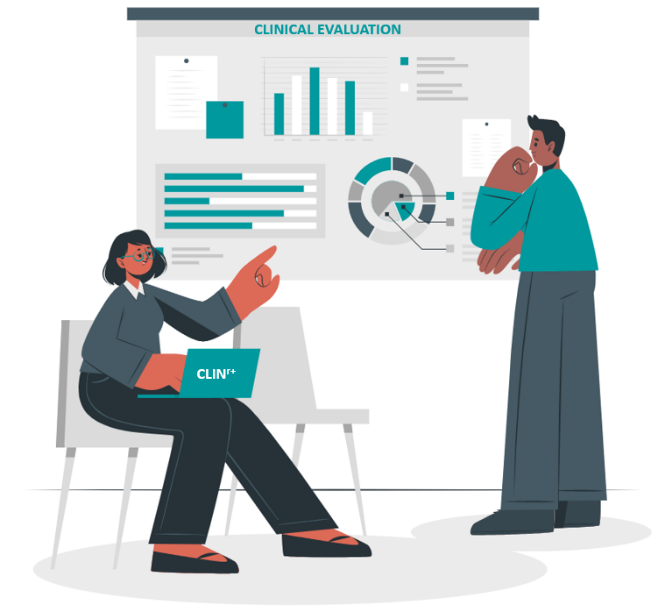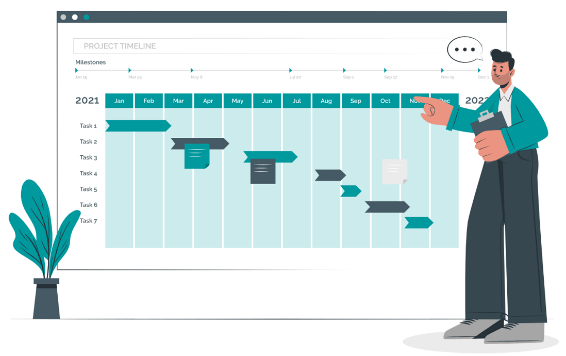Remediating a problematic Clinical Evaluation Report
Outsourcing EU MDR Clinical Evaluation and Investigations
This manufacturer produces Holter cardiac device innovations, which streamline the arrhythmia diagnostic process from weeks to days. In addition to producing their own device, they work with multi-national companies as contract manufacturers. Their Clinical Evaluation and Investigations were proving resource hungry and limited under the EU MDD QMS and they found themselves with limited capacity within their Clinical Affairs department.

The company could not justify adding a full-time Clinical Affairs staff to meet Clinical Evaluations and Investigations under MDR and to prepare for the EU MDR transition. The manufacturer wanted to maintain their agile team and focus on design engineering and manufacture. So, the company sought a MedTech Clinical Affairs consultancy partner to outsource their EU MDR Technical Documentation workflow.
The Challenge
The manufacturer needed clarity on the amount of work and resources required from the business unit. CLIN-r+ knows that for accessibility and collaboration, we need to be on a live virtual platform. We delivered this within 48 hours with a centralised project plan to keep stakeholders informed.
During the project discovery stage, CLIN-r+ carried out an EU MDR gap assessment. We found the expected shortfalls under EU MDD in the manufacturer Technical Files:
- No Clinical Development Plan.
- No State of the Art (SoTA).
- No Clinical Investigation SOP and templates (PMCF Plan, Clinical Investigation Plan, etc.)
- No standalone Clinical Evaluation SOP or templates showing compliance with MEDDEV 2.7.1rev4, IMDRF guidance and MDCG guidance.
- The Literature Review didn’t meet the definition of a ‘Systematic Literature Review’.
- The Clinical Evaluation Plan and Report didn’t meet MEDDEV 2.7.1rev4, IMDRF guidance and MDCG guidance.
- It was unclear if sufficient clinical evidence was obtained which increased the risk for NCR or unsuccessful transition audit.
- No benefit-risk with clinical evidence for justification.
- There was a clear disconnect between Vigilance data on risks (device deficiencies and adverse events) and the Risk Management Report.
- State of the Art and the target device clinical data that was found in rapid review indicated there was missing data that could be used to justify sufficient clinical data.
- The PMS process and documents needed alignment as per EU MDR Article 120 (transition period) and requirements for trend analysis.
- They needed remediation to comply with:
- Technical Documentation needs in MDR Annex II – Risk Management and PMS.
- MDR classification, GSPR and conformity route.
- Post Market Surveillance process.
The CLIN-r+ Solution
Our gap assessment outlined the needed areas for remediation and project tasks. We designed the assessment to not only find gaps in EU MDR conformity, but also highlight opportunities for the products and reduce the regulatory maintenance burden of the current system.
CLIN-r+ created a timebound project plan with matching deliverables. This met the 8 week deadline for EU MDR submission as agreed with the Notified Body.
On this project, we agreed that CLIN-r+ would undertake and internally streamline the manufacturers Clinical Evaluation process to meet EU MDR requirements. In order to do this, we:
- Reduced the management burden of the project (internal staff were already at high capacity) by providing a full capacity MDR consultant and Clinical Affairs team (SLR reviewers, Medical Writers, Medical KOLs, Biostatisticians and Clinical Trial Designers) to hit the ground running.
- Provided resources (SLR software, literature databases, article archive software and data extraction).
- Provided an EU MDR alignment document known as a ‘Device Summary’ which ensured terminology, classification and GSPRs were aligned for the CER to be fast tracked, agreed and signed off by manufacturer leadership.
- Provided live, accurate and transparent measurement of progress. Developed a portal (within 1 week) to facilitate remote and group collaboration where the project plan and deliverables were accessed in real time by all team members and IP was maintained on the manufacturer’s portal.
- Provided Clinical Evaluation strategy as the Clinical Evaluation Plan and Clinical Development Plan.
- Project managed the project plan board with deadlines and reminders to stakeholders to ensure timely inputs for sign-off to deadlines.
- Managed weekly huddles to ensure all team members were updated and motivated to deliver on time.
The Deliverables
Under EU MDD, the system had multiple Technical Files within the same product family which often created duplication in effort and validation work. We advised on consolidated product family Technical Documentation. The ‘Intended Purpose’ of the devices was aligned but terminology in the product descriptions needed alignment with EU MDR.
CLIN-r+ conducted a ‘Kick-Off’ phase to align the project with the overall strategy. This was signed off and executed in the ‘Device Summary’ that forms the basis of the files within the Technical Documentation workstreams. We also used this phase to ensure that all stakeholders were on the same page throughout the project.
We ran weekly huddles which provided the team with support and momentum to focus on key deliverables. It allowed us to provide Clinical Regulatory support and fast track on workflows that the internal team were not confident to progress.
CLIN-r+ provided drafts of the completed CDP, CEP, SLR report, SoTA write-up, PMCF plan and CER for review and sign off. We coordinated signatures of the suitability qualified Clinical Affairs team for each workflow including a medical review by Clinical Expert (in this case, a Cardiologist).
The manufacturer received files for the device Technical Documentation created, approved, and signed off by suitably qualified medical experts to meet the requirements of EU MDR, IMDRF, MDCG guidance, ISO standards, and MEDDEV 4.7.1rev4.
The Benefits
The manufacturer received all deliverables in the specified amount of time, and in keeping with the CLIN-r+ proposal budget.
Above the deliverables, the project had a few noticeable benefits:
- 45% reduction in cost of EU MDR projected transition spend from the initial internal estimates versus the CLIN-r+ proposal.
- Consolidated multiple individual product files under EU MDD to one MDR product family significantly reduced the cost, resources, and time to compile EU MDR Technical Documentation.
- Delivery of the Clinical Evaluation Report and PMCF Plan within 6 weeks from the start of the project through to execution phase.
- Execution of new workflows for Clinical Evaluation and Clinical Investigation within 8 weeks. Alignment of terminology and data across PMCF, Risk Management file, the Master Validation Report and Clinical Evaluation Report.
- Met the requirements of Article 120 to be eligible for the EU MDR transition extension if it was needed or if the audit was prolonged.
- Completed the Technical Documentation 6 months ahead of schedule for EU MDR submission.
- Provided a significant reduction in 80% of time and 70% of costs to do the periodic CER updates.
- Successful EU MDR transition with no findings in the Clinical Evaluation workflow.
- Low cost passive receipt of yearly clinical data from PMCF activities to maintain CE mark and build marketing claims for product positioning.
- Able to offer MDR Technical Documentation and CE maintenance as a contract manufacturer which increased sales of current devices by x5.
By partnering with CLIN-r+, our clients can proactively implement their strategic goals well in advance of deadlines. We keep the project on track and ensure each gap has been closed, providing the support you need, where you need it.
Should you have any questions or need professional assistance, CLIN-r+ has a wealth of experience to call upon. Get in touch!





